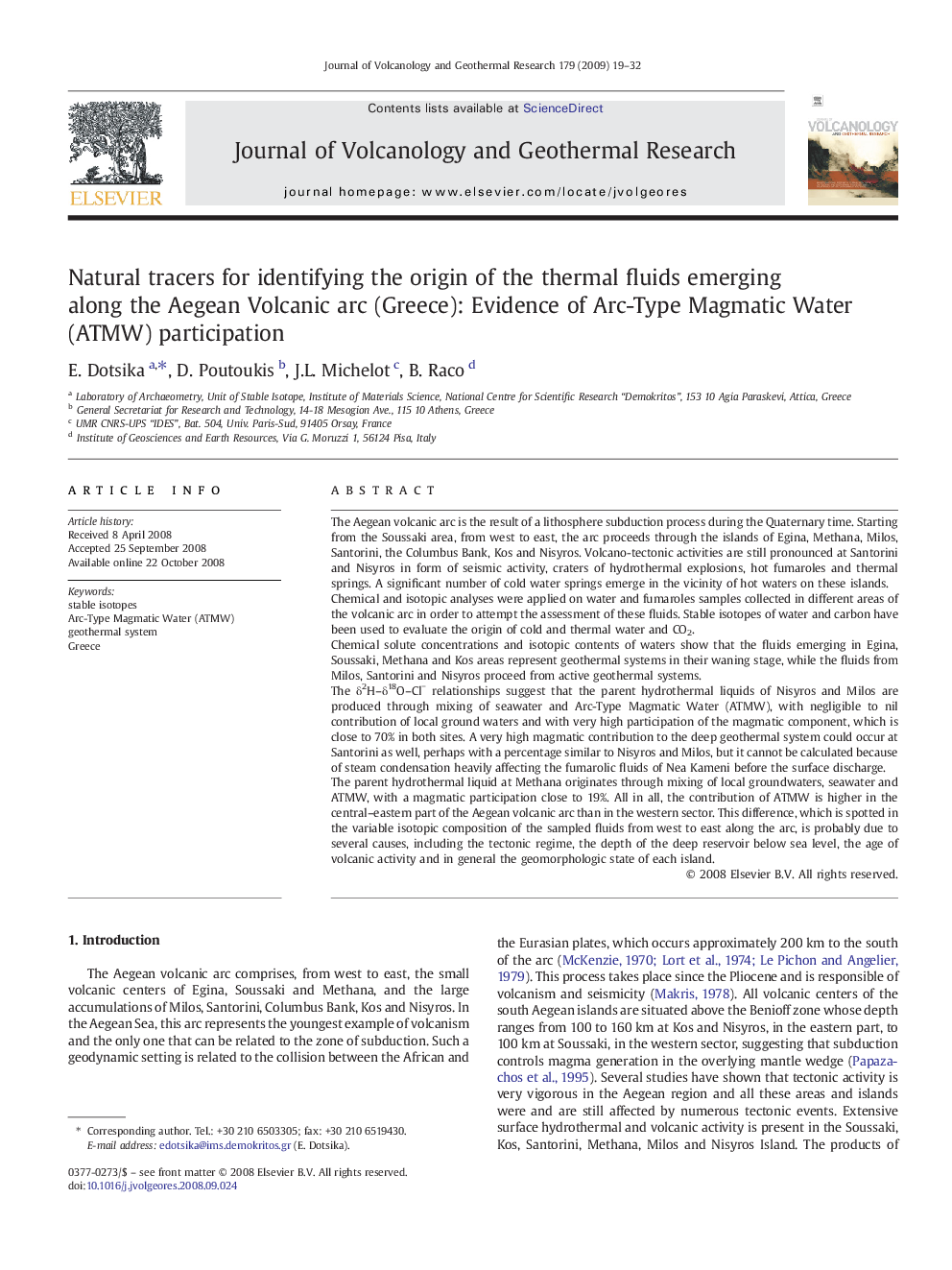| کد مقاله | کد نشریه | سال انتشار | مقاله انگلیسی | نسخه تمام متن |
|---|---|---|---|---|
| 4714501 | 1638444 | 2009 | 14 صفحه PDF | دانلود رایگان |

The Aegean volcanic arc is the result of a lithosphere subduction process during the Quaternary time. Starting from the Soussaki area, from west to east, the arc proceeds through the islands of Egina, Methana, Milos, Santorini, the Columbus Bank, Kos and Nisyros. Volcano-tectonic activities are still pronounced at Santorini and Nisyros in form of seismic activity, craters of hydrothermal explosions, hot fumaroles and thermal springs. A significant number of cold water springs emerge in the vicinity of hot waters on these islands.Chemical and isotopic analyses were applied on water and fumaroles samples collected in different areas of the volcanic arc in order to attempt the assessment of these fluids. Stable isotopes of water and carbon have been used to evaluate the origin of cold and thermal water and CO2.Chemical solute concentrations and isotopic contents of waters show that the fluids emerging in Egina, Soussaki, Methana and Kos areas represent geothermal systems in their waning stage, while the fluids from Milos, Santorini and Nisyros proceed from active geothermal systems.The δ2H–δ18O–Cl− relationships suggest that the parent hydrothermal liquids of Nisyros and Milos are produced through mixing of seawater and Arc-Type Magmatic Water (ATMW), with negligible to nil contribution of local ground waters and with very high participation of the magmatic component, which is close to 70% in both sites. A very high magmatic contribution to the deep geothermal system could occur at Santorini as well, perhaps with a percentage similar to Nisyros and Milos, but it cannot be calculated because of steam condensation heavily affecting the fumarolic fluids of Nea Kameni before the surface discharge.The parent hydrothermal liquid at Methana originates through mixing of local groundwaters, seawater and ATMW, with a magmatic participation close to 19%. All in all, the contribution of ATMW is higher in the central–eastern part of the Aegean volcanic arc than in the western sector. This difference, which is spotted in the variable isotopic composition of the sampled fluids from west to east along the arc, is probably due to several causes, including the tectonic regime, the depth of the deep reservoir below sea level, the age of volcanic activity and in general the geomorphologic state of each island.
Journal: Journal of Volcanology and Geothermal Research - Volume 179, Issues 1–2, 15 January 2009, Pages 19–32